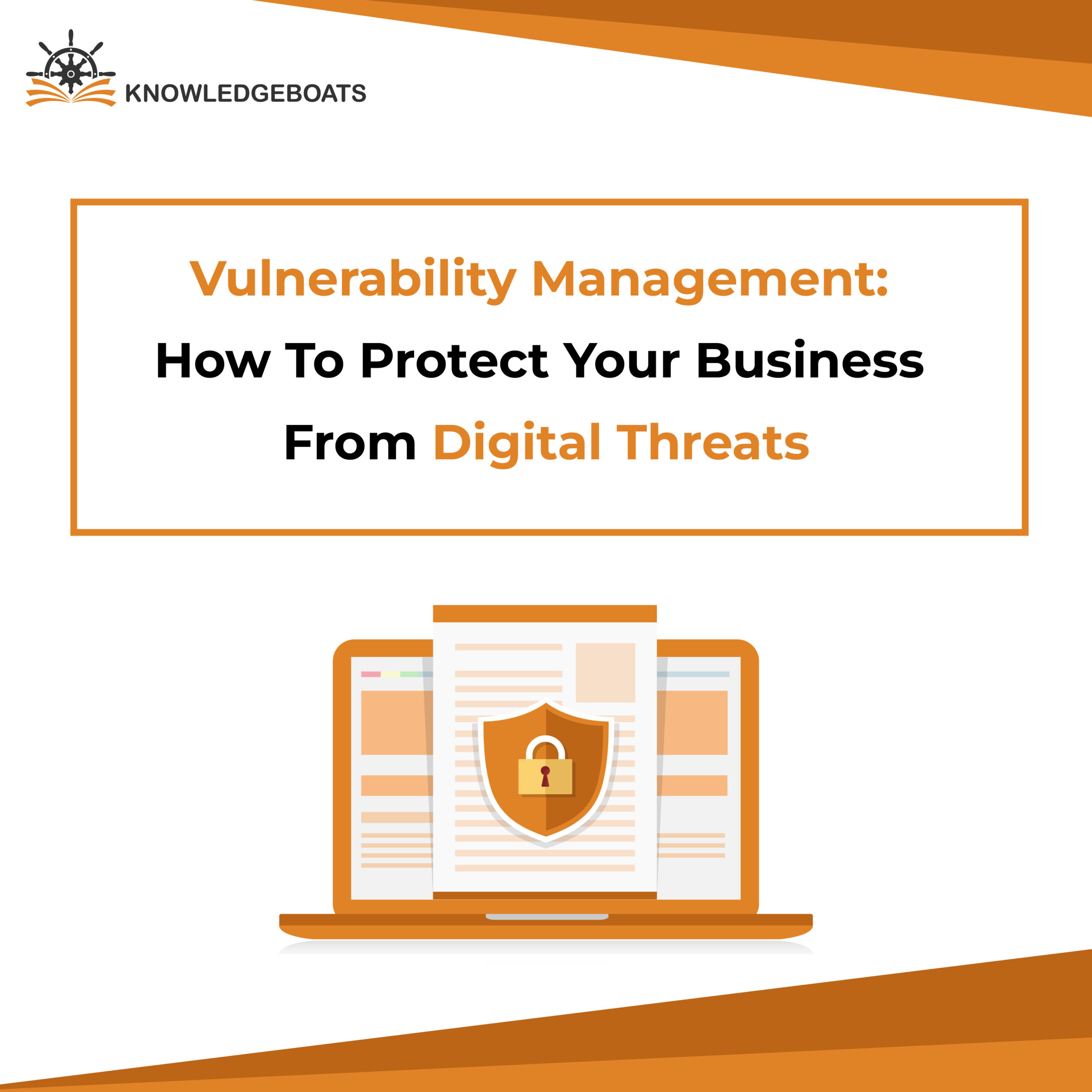
Modern vulnerability management is more crucial than ever before. Many large companies have a significant business infrastructure in digital sectors secured in a hard drive or cloud. This situation welcomes dangerous possibilities for organizational damage due to cyber-attacks and malicious behavior. Currently, only an organization with vulnerabilities in its digital security web exists.
However, in this situation, vulnerability management strategies will enable companies to identify and treat potential weak spots in defense before they create serious issues. Moreover, protecting businesses from digital threats is crucial in today’s interconnected world. Vulnerability management is a vital component of an effective cybersecurity strategy. This blog will discover steps businesses can take to protect businesses from digital threats.
What is Vulnerability Management?
It is the process of identifying, evaluating and mitigating threats posed by weaknesses in systems and software. The management of vulnerabilities ensures the safety and security of systems in companies. When you comply with security monitoring for searching weaknesses and take crucial steps to reduce them, the organization protects itself from cyber attacks.
The vulnerability management lifecycle includes regular scanning of the network and infrastructure to identify potential threats and take crucial steps before these weaknesses exploit the whole system. An organization can minimize risk exposure by implementing a proper vulnerability management system while maximizing security effectiveness.
Steps Taken to Protect Business from Digital Threats
Here are a few steps that you should take to protect your business from digital threats through vulnerability management:
Asset Inventory
Maintain up-to-date assets management of your organization’s hardware and software assets. This includes servers, workstations, laptops, routers, firewalls, and other devices or applications that are part of your IT infrastructure. It will help you identify all the components that must be monitored for vulnerabilities. Including servers and workstations, network devices, IoT devices, and software applications is essential.
Network Segmentation
Implement network vulnerability to isolate critical systems and sensitive data from the rest of your network. This limits the impact of a potential breach and prevents lateral movement by attackers.
Employee Awareness and Training
Educate your employees about the importance of threat intelligence and their role in vulnerability management. Train them on best practices such as solid password hygiene, identifying phishing emails, and avoiding suspicious websites. Regularly conduct security awareness training to ensure employees understand the risks and follow best practices for secure computing. Employees can often be the weakest link in the security chain, so fostering a security-conscious culture is essential.
Regular Vulnerability Assessments
Conduct regular vulnerability assessments to identify weaknesses in your systems, networks, and applications. These scans will identify security weaknesses in your systems and applications, such as outdated software versions, misconfigurations, or known vulnerabilities. It can be done through automated scanning tools, penetration testing, or engaging a professional security firm. By identifying vulnerabilities, you can take appropriate measures to address them before they are exploited.
Patch Management
Keeping updated software and systems with the latest patches and security trends is crucial. Many vulnerabilities are discovered and patched by software vendors regularly. Applying patches promptly helps protect your systems from known vulnerabilities. Implement a robust patch management process to ensure timely installation of patches across your infrastructure, including operating systems, applications, and firmware.
Vulnerability Remediation
Develop a process for addressing identified vulnerabilities promptly. This may involve applying patches, implementing configuration changes, or deploying additional security controls. Create a timeline for remediation based on the risk associated with vulnerability.
Access Control and User Management
Implement strong access controls to limit access to sensitive systems and data. Regularly review and update user privileges and permissions to ensure only authorized individuals can access critical resources.
Engage Security Professionals
Consider working with external security professionals specializing in vulnerability management and penetration testing. They can provide an unbiased security posture assessment and help identify blind spots. Also, they can provide specialized expertise, conduct regular security audits, and assist with incident response planning.
Conclusion
Vulnerability management is ongoing, and the threat landscape is constantly evolving. Regularly reassess your systems, stay informed about emerging threats, and adapt your security controls accordingly. Implementing these measures can significantly enhance your business’s resilience against digital threats. Also, by complying with compliance management, the organization will monitor the system and ensure it complies with industry standards.



